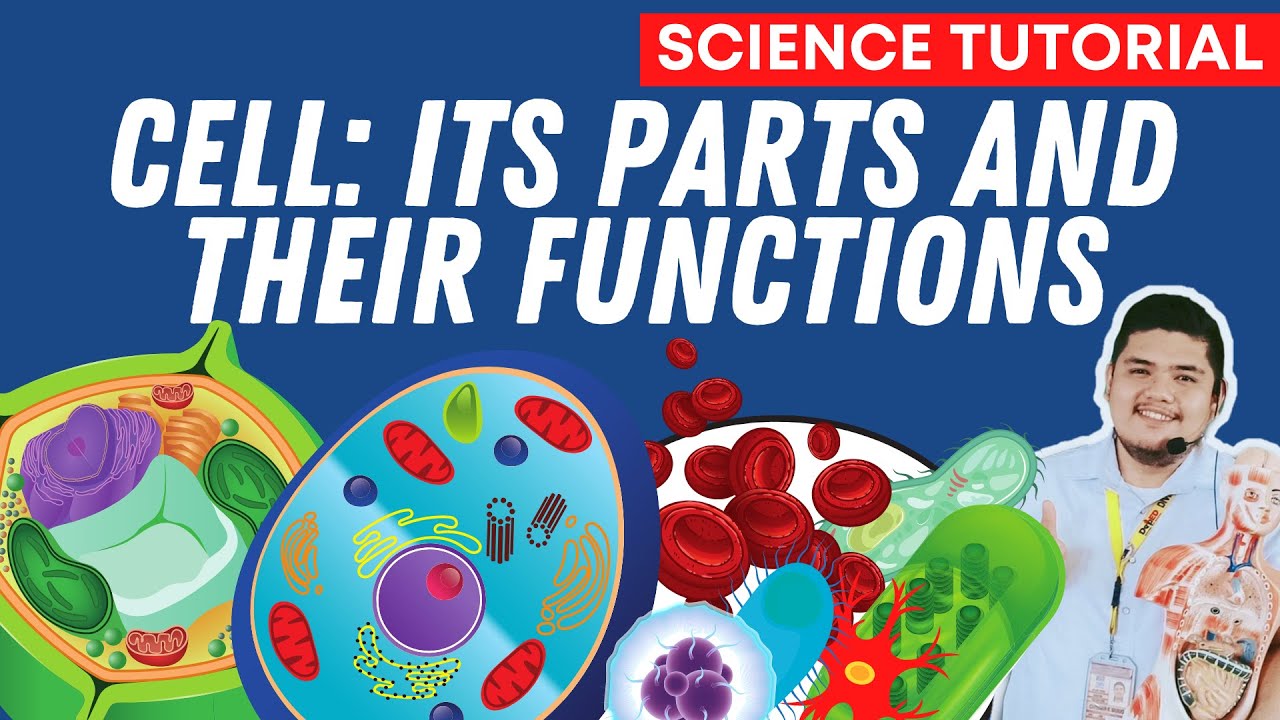2. Organisation of the Organism (Cambridge IGCSE Biology 0610 for exams in 2023,2024 and 2025)
Summary
TLDRThis IGCSE study video delves into the organization of organisms, highlighting the cell as the fundamental unit of life. It distinguishes between animal and plant cells, detailing their structures and functions, such as the nucleus, mitochondria, and cell membrane. Additional plant cell features like the cell wall, chloroplasts, and vacuole are also covered. The video further explores bacterial cells, cell division, and the formation of multicellular organisms. It introduces specialized cells like ciliated, root hair, and palisade mesophyll cells, and explains the concept of magnification in microscopy. The video is a comprehensive guide for biology students, aiming to clarify complex cellular processes.
Takeaways
- 🔬 Cells are the fundamental units of life, serving as the basic building blocks of organisms.
- 🐾 In animal cells, the nucleus acts as the control center, mitochondria are the powerhouses, and the cell membrane regulates substance entry and exit.
- 🌿 Plant cells share similar organelles with animal cells but also possess a cell wall, chloroplasts for photosynthesis, and a central vacuole for storage.
- 🌱 The cell wall in plant cells is composed of cellulose, providing structural strength and protection.
- 🍃 Chloroplasts contain chlorophyll, capturing sunlight to convert into food through photosynthesis.
- 🧬 Bacterial cells differ from animal cells by having circular DNA and plasmids, which facilitate genetic information exchange.
- 📈 New cells are produced through cell division, where one cell splits to form two, and so on, contributing to the growth of an organism.
- 🔬 The hierarchy of biological organization includes cells, tissues, organs, organ systems, and finally, the complete multicellular organism.
- 🌡️ Specialized cells have specific functions; for example, ciliated cells move mucus, root hair cells absorb minerals, and neurons transmit electrical impulses.
- 🔍 Magnification is calculated by dividing the image size by the actual size, and understanding this concept is crucial for interpreting microscopic images.
- ⚖️ Units of measurement conversion is necessary when dealing with different scales, such as from micrometers to millimeters.
Q & A
What is the basic unit of life according to the Cambridge IGCSE syllabus?
-The basic unit of life is the cell, which serves as the fundamental building block of an organism.
What are the key organelles found in an animal cell?
-The key organelles in an animal cell include the nucleus, mitochondria, cell membrane, cytoplasm, and ribosomes.
What is the function of the nucleus in a cell?
-The nucleus contains genetic material and controls the cell by storing DNA and coordinating many activities within the cell.
Where does aerobic respiration take place in a cell?
-Aerobic respiration takes place in the mitochondria, which is often referred to as the powerhouse of the cell.
How does the cell membrane function in a cell?
-The cell membrane controls the entry and exit of substances into and out of the cell, providing protection and regulating the internal environment.
What additional organelles does a plant cell have compared to an animal cell?
-A plant cell has additional organelles such as the cell wall, chloroplasts, and vacuole, which are not present in animal cells.
What is the primary function of chloroplasts in a plant cell?
-Chloroplasts contain chlorophyll and are the site of photosynthesis, where light energy from the sun is converted into food for the plant.
How are new cells produced in an organism?
-New cells are produced by the division of existing cells, where one cell divides to make two, and these continue to divide to form more cells.
What is the relationship between cells, tissues, organs, and organ systems in a multicellular organism?
-Groups of similar cells form tissues, groups of different tissues make an organ, organs work together in an organ system, and these combine to form a multicellular organism.
What is the formula used to determine the magnification of a specimen image?
-The formula to determine the magnification of an image is magnification = image size (in millimeters) / actual size (in millimeters).
How can one convert micrometers to millimeters and vice versa?
-To convert from millimeters to micrometers, multiply the number by 1000. To convert from micrometers to millimeters, divide the number by 1000.
Outlines

This section is available to paid users only. Please upgrade to access this part.
Upgrade NowMindmap

This section is available to paid users only. Please upgrade to access this part.
Upgrade NowKeywords

This section is available to paid users only. Please upgrade to access this part.
Upgrade NowHighlights

This section is available to paid users only. Please upgrade to access this part.
Upgrade NowTranscripts

This section is available to paid users only. Please upgrade to access this part.
Upgrade NowBrowse More Related Video
5.0 / 5 (0 votes)





